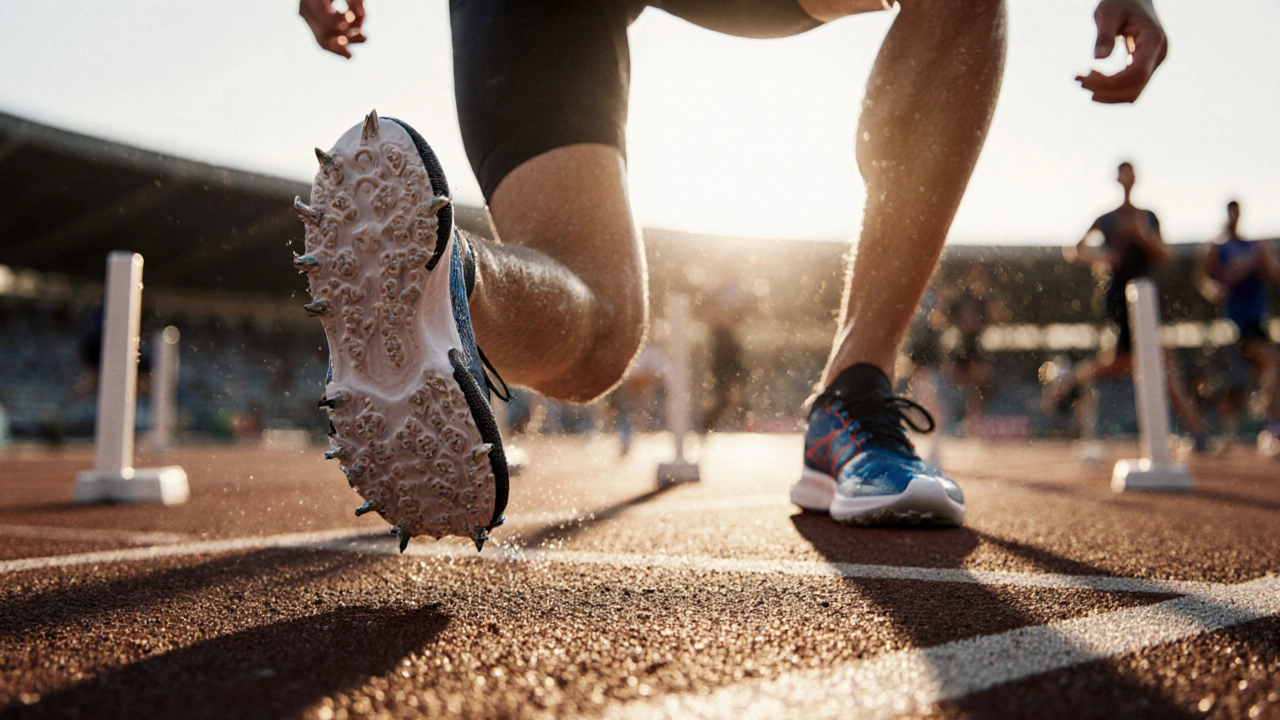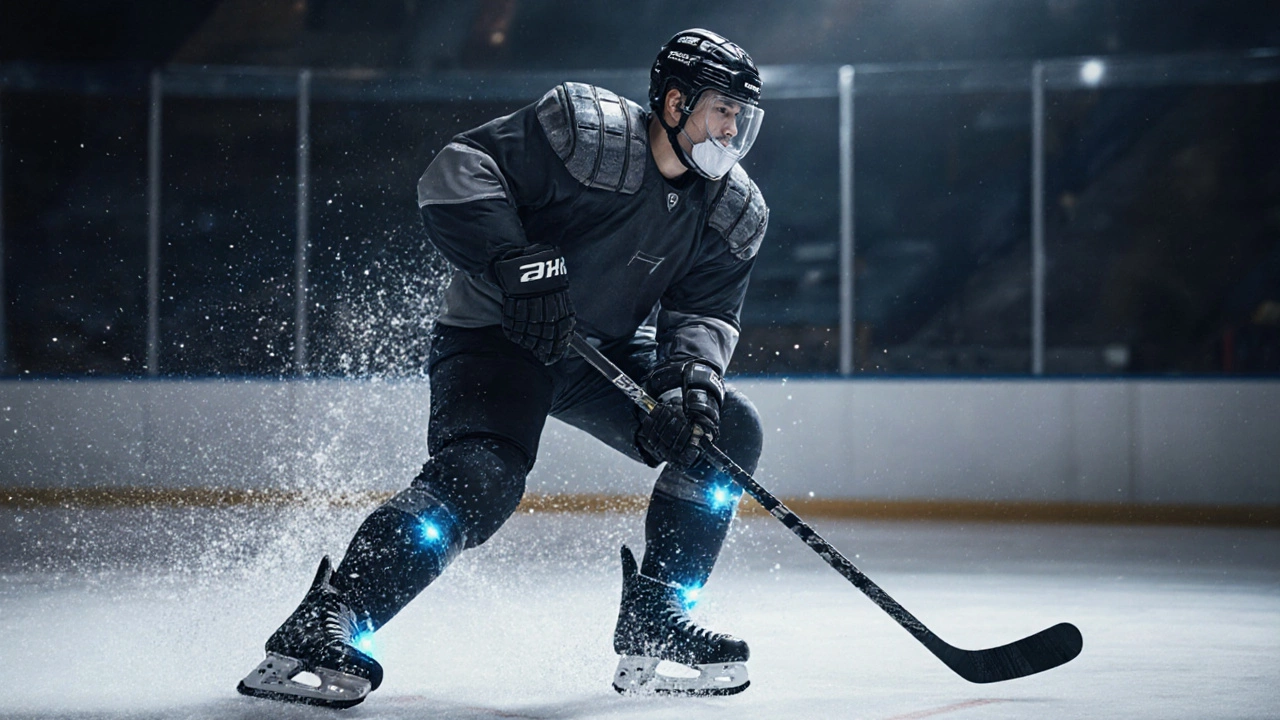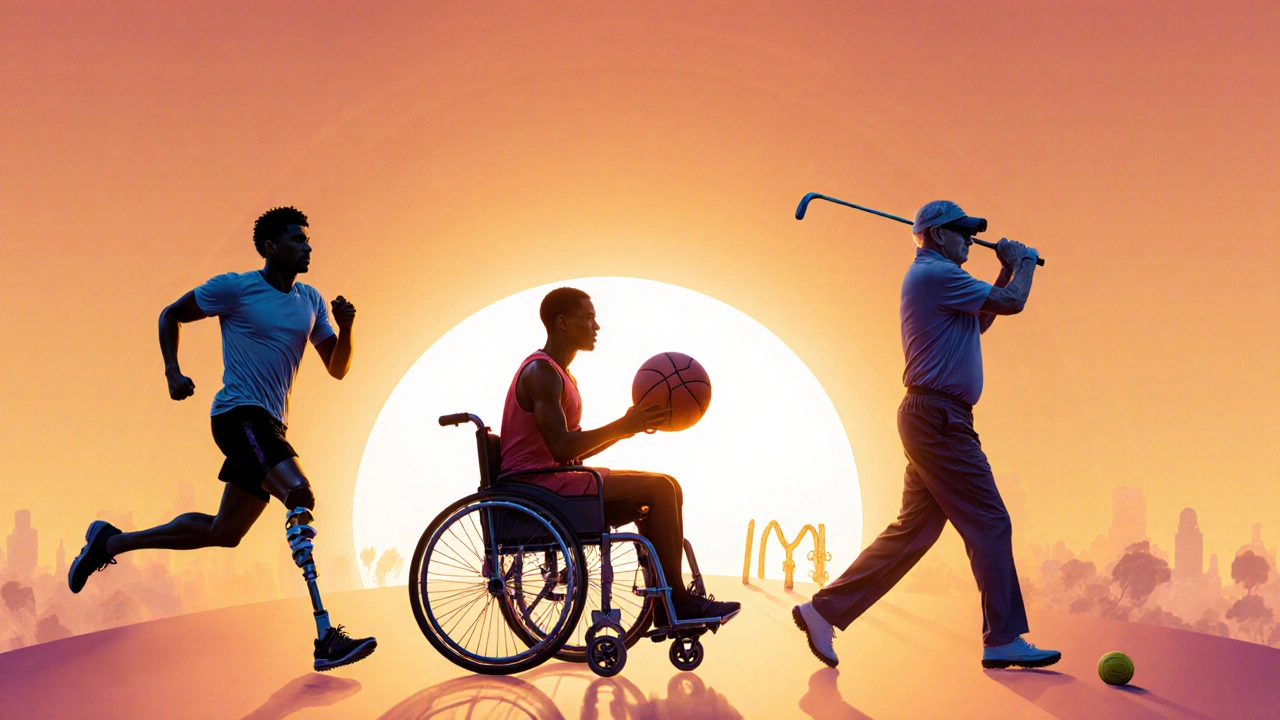Why Is Equipment Used in Sport? The Real Reasons Behind Every Tool, Gear, and Device
 Nov, 16 2025
Nov, 16 2025
Ever watch a sprinter explode out of the blocks and wonder why they’re wearing those weird shoes with spikes? Or see a tennis player adjust their grip and think, Why not just use any racket? It’s not just about looking cool. Every piece of equipment in sport exists for one simple reason: to make performance possible, safer, and more precise.
Performance Isn’t Just About Skill - It’s About Tools
You can train your body to run faster, jump higher, or swing harder. But without the right equipment, you’re fighting against physics. A baseball bat isn’t just wood with a handle - it’s engineered with specific weight distribution, barrel size, and flex to maximize energy transfer when it hits the ball. The difference between a .280 hitter and a .320 hitter? Sometimes it’s not their swing. It’s the bat they’re swinging.
Same goes for running shoes. Modern midsoles use foam compounds like Pebax or EVA that return up to 85% of the energy you put in with each step. A pair of these shoes can shave seconds off a 5K time. That’s not magic. That’s material science. Athletes don’t just wear gear - they rely on it to unlock capabilities their bodies alone can’t reach.
Safety Isn’t Optional - It’s Built In
Think about hockey. Without helmets, shoulder pads, and mouthguards, the game would be dangerous. In 2023, the NHL reported a 42% drop in concussions among players using certified helmets with multi-layered padding compared to older models. That’s not coincidence. Equipment design has evolved based on real injury data.
Even in sports that look low-risk, like golf or cycling, gear matters. Golfers wear cleats to prevent slips on wet grass - a simple fall can cause a back injury. Cyclists wear helmets because head trauma accounts for 75% of cycling-related deaths. The equipment isn’t there to make you feel safe. It’s there because people have died without it.
Consistency and Fair Play Require Standardization
Imagine a basketball game where one team uses a size 7 ball and the other uses a size 5. Or a swimmer wearing a full-body wetsuit while everyone else wears a standard suit. That’s not competition - that’s chaos.
That’s why governing bodies like FIFA, FINA, and the NCAA set strict rules on equipment. A tennis racket can’t be larger than 12.5 inches wide. A soccer ball must weigh between 410 and 450 grams. These aren’t arbitrary. They’re there to level the playing field. Without standards, the best athlete might lose not because they’re slower or weaker - but because their gear was inferior or illegal.

Equipment Lets People Participate - Not Just Watch
Not everyone can run a 4-minute mile. But with the right adaptive equipment, someone with a prosthetic leg can compete in a 10K race. Adaptive cycling frames, specialized wheelchairs for basketball, and grip-enhancing gloves for wheelchair tennis have turned exclusion into inclusion.
Equipment doesn’t just help elite athletes. It lets a 70-year-old with arthritis play golf. It lets a kid with asthma use a nebulizer before swimming. It lets someone with visual impairment play goalball with a ball that jingles. Sport isn’t just for the physically perfect. Equipment makes it possible for the physically diverse to join in.
Technology Turns Gear Into Data
Modern sports equipment isn’t just physical - it’s digital. Smart basketballs track spin rate and release angle. Wearable sensors in soccer cleats measure foot pressure and stride symmetry. Even a simple baseball glove now has embedded chips that record catch location and hand speed.
Coaches use this data to fix technique. Athletes use it to avoid overuse injuries. A pitcher who throws 95 mph but has a 20% higher shoulder torque than average? Their gear might not be the problem - but the data from their glove and wrist sensor tells them exactly when to rest.
This isn’t science fiction. It’s happening in high schools and college programs right now. Equipment has become the quiet coach in the locker room - always watching, always recording, always helping.

It’s Not About the Brand - It’s About the Fit
People think expensive gear = better performance. But a $300 running shoe won’t help if it’s two sizes too big. A $500 tennis racket won’t improve your serve if the grip is too thick for your hand.
The best equipment is the one that fits your body, your style, and your sport. A beginner golfer doesn’t need custom-fitted clubs. They need clubs that are lightweight and forgiving. A seasoned weightlifter doesn’t need flashy wrist wraps - they need ones that hold firm under 400 pounds.
Equipment isn’t about status. It’s about function. The right gear doesn’t make you better. It removes the barriers between you and your potential.
What Happens When You Skip the Gear?
Try playing soccer without shin guards. You’ll get bruised - maybe fractured. Try swimming without goggles. Your eyes will burn, your vision will blur, and you’ll lose time turning your head. Try lifting weights without a belt when you’re doing heavy squats. Your lower back will pay for it later.
Equipment isn’t optional. It’s the invisible partner in every athletic effort. It protects your body, sharpens your focus, and gives you the edge. Whether you’re a pro or a weekend player, the gear you choose isn’t a luxury - it’s a necessity.
Do I need expensive sports equipment to get better?
No. Expensive gear doesn’t automatically make you better. What matters is that the equipment fits your body, matches your skill level, and suits the sport. A beginner runner doesn’t need carbon-plated racing shoes - they need a comfortable, supportive pair that doesn’t cause blisters. Focus on fit and function, not price tags.
Can I use regular clothes instead of athletic gear?
For casual activity, maybe. But for serious training or competition, regular clothes can hurt performance and increase injury risk. Cotton shirts hold sweat, causing chafing. Regular sneakers lack cushioning and support for running. Athletic fabrics wick moisture, reduce friction, and allow freedom of movement. Your body works better when your gear works with it - not against it.
Why do some sports have strict equipment rules?
To ensure fairness. If one athlete uses a lighter racket, a faster ball, or a more aerodynamic suit, they gain an unfair advantage. Governing bodies set limits on size, weight, material, and design so that skill, not technology, decides the winner. It’s not about stopping innovation - it’s about keeping competition balanced.
Is sports equipment only for professionals?
Absolutely not. Equipment is for anyone who plays. Whether you’re shooting hoops in the driveway, walking with trekking poles, or playing pickleball in the park, the right gear makes it safer, more comfortable, and more enjoyable. You don’t need to be an Olympian to benefit from proper equipment.
How often should I replace my sports equipment?
It depends on use and wear. Running shoes last 300-500 miles. Tennis strings lose tension after 20-40 hours of play. Helmets should be replaced after any hard impact, even if there’s no visible damage. Check for cracks, worn soles, loose stitching, or reduced cushioning. When gear stops doing its job, it’s time to replace it - no matter how much you paid for it.
At its core, sports equipment is the bridge between human effort and physical achievement. It’s the reason a shot putter can launch 16 pounds farther than their body weight. It’s the reason a swimmer can slice through water like a blade. It’s the reason a child with a disability can join the game. Without it, sport wouldn’t just be harder - it would be limited to only a few.